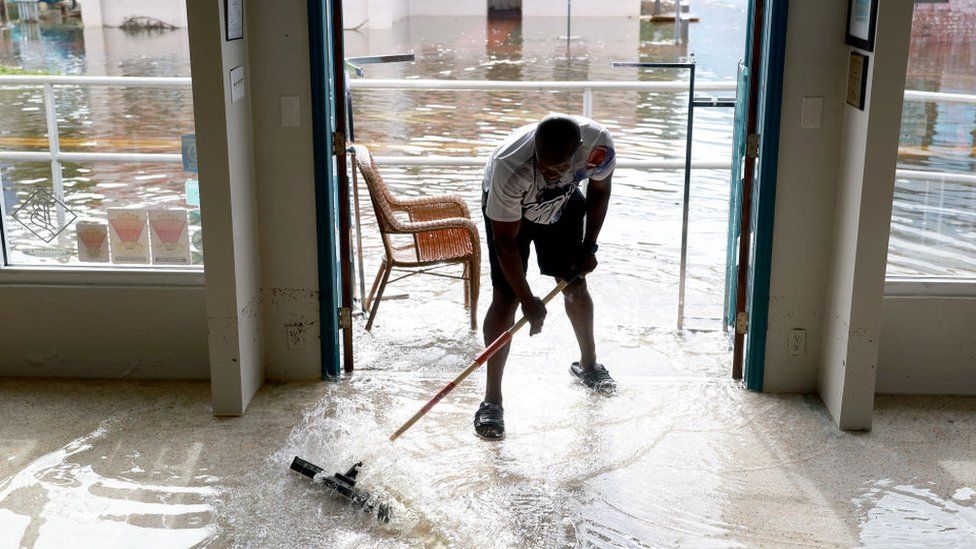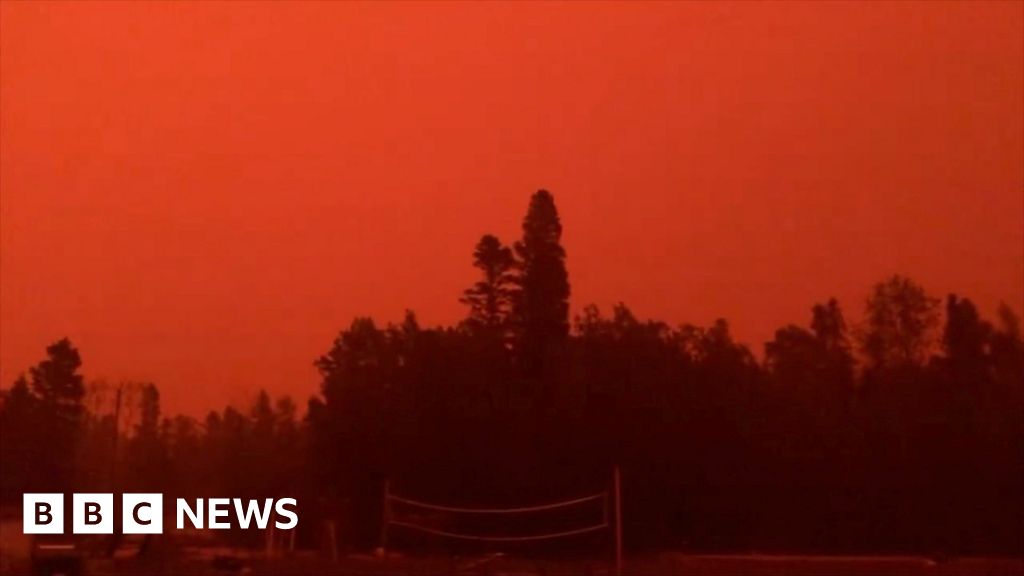ARTICLE AD BOX
 Image source, Getty Images
Image source, Getty Images
A man in Crystal River, Florida, sweeps flood water from a local store
By Brandon Drenon
BBC News, Washington
Tropical Storm Idalia is drenching the Carolinas and may bring dangerous surf to the region over the coming Labor Day weekend, say forecasters.
The National Weather Service (NWS) warned up to 9in (23cm) of rain and "life-threatening flash flooding" may hit parts of eastern North Carolina.
Idalia brought mass flooding when it made landfall as a category three hurricane in Florida on Wednesday.
The eye of the storm is set to spin off the North Carolina coast on Thursday.
More than 200,000 homes and businesses were still without power, from Florida and Georgia to South and North Carolina.
Watch: Hurricane Idalia: 12 hours in 80 seconds
US President Joe Biden called Florida Governor Ron DeSantis on Thursday to let him know he had signed a major disaster declaration, ordering all available federal resources to help with the response to Idalia.
Mr DeSantis told reporters at a press conference that Idalia was far less destructive than feared.
Even so, insured property losses in Florida were projected to hit $9.36bn (£7.4bn), investment bank UBS said.
In North Carolina, maximum sustained wind speeds in parts of the state were predicted to reach 60mph (96km/h) on Thursday. Tropical storm-force winds extended outwards up to 185 miles.
Storm surges in coastal low-lying areas could cause "life-threatening inundation, from rising water moving inland", the NWS said.
As the storm churns out into the Atlantic Ocean, potential life-threatening surf and rip current were expected to affect the US south-east coast into the Labor Day weekend, when many Americans head to the beach, said the NWS.
On Wednesday, Idalia hit Florida, Georgia and South Carolina.
In Florida, two deaths were reported by car crashes attributed to rainy conditions. A man died in Georgia after he was hit by a falling tree.
Several Florida communities were inundated with rain and seawater thrown ashore by fierce winds, knocking down power lines, toppling trees, engulfing homes and submerging streets.
Idalia also spawned brief tornadoes, one of which turned over a car in Goose Creek, South Carolina.
In South Carolina's Charleston Harbor, the water levels reached 9.2ft (2.8m), the NWS said, making it the fifth-highest water level ever recorded there.

 1 year ago
46
1 year ago
46








 English (US) ·
English (US) ·